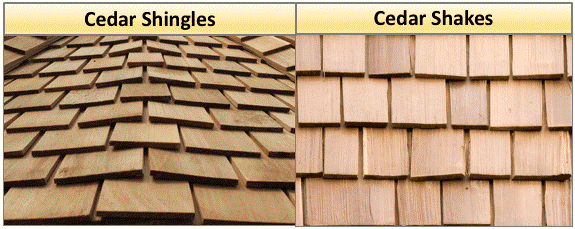Understanding Storm Damage
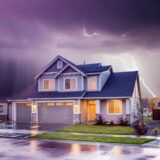
While your roof is designed to withstand the elements, some storms are more intense than others. There are signs to look for when you believe there may have been storm damage to your roof. Please be safe when inspecting your roof—possibly view from a window inside the house or use binoculars from the ground. If in doubt, call a professional roofing contractor.
Wind Damage
Significant wind can cause shingles to blow off the roof deck. Missing shingles can lead to leaks and other interior damage. Other wind damage may not be easy to see, especially if the adhesive seal that provides a water-shedding surface is broken. Always be safe when checking for roof damage. Call a professional roofing contractor for assistance.
All manufacturers publish a wind warranty on their shingles; it is important to compare the wind coverage when making your shingle selection on a new roof. If the winds that caused the shingle damage were above the manufacturer’s wind coverage, you’ll need to file an insurance claim. If they were not, contact the shingle manufacturer to file a claim.
Potential signs of wind damage:
- Missing shingles
- Thin horizontal lines where granules have been worn off about 1-2 inches beneath the shingle above; this could indicate that the shingle seal was broken and the shingle was flapping in the wind rubbing against the shingle above it. To be effective against the elements, shingles must be sealed to each other as one watertight roof deck.
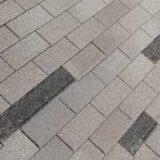

Hail Damage
Usually hail is not something that you can miss—it is typically a widespread weather event in a neighborhood and not isolated to just one house on the block. Hail can bruise a shingle causing an indentation; “impact mark” is the term insurance companies use. Sometimes the impact marks can be hard to see, but that indentation can crack the shingle allowing water to infiltrate over time. You may need the assistance of a professional roofing contractor to determine the scope of the damage. If you have hail damage, you will need to file an insurance claim.
If your hail event was significant in terms of widespread damage, you will have roofing contractors who specialize in “storms” knocking on your door within days of the event. As always, you should use your best judgment when selecting a contractor.
Potential signs of hail damage
- Other collateral hail damage around the house; dents on cars or other items on your house or in your yard
- Other Items include: aluminum siding, gutters & downspouts, standing seam metal roofs above porch or bay window, garage doors (if aluminum), metal water tables, HVAC units, screens, shutters, light fixtures
- A distinct pattern of small round-shaped divots on the edges of the shingles.
- Indentations or impact marks in the shingle where granules are missing.
- A large pile of granules at the end of your downspout; a small amount is normal, especially on new shingles.
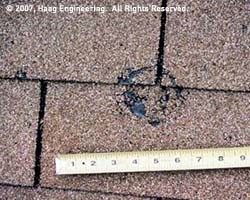
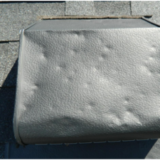
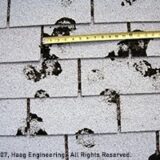
Falling Debris
During some storms tree branches or other falling debris can land on your roof. Some items are small and won’t cause an issue—other items are so large that you will naturally be concerned about damage. Use your best judgment. You may need to have a professional roofing contractor inspect your roof for damage. If you have damage from debris on your roof, you will need to file an insurance claim.
Potential signs of debris damage:
- Visual identification of debris on the roof deck.
- Missing shingles.
- Cracked shingles.
- A large pile of granules at the end of your downspout; a small amount is normal, especially for new shingles.

Example of granule debris in gutters:
If you believe your home has sustained any storm damage or even if you are uncertain…it is always in your best interest to have a professional carefully inspect your property. Having a professional assess your property for storm damage does not impact your homeowner’s insurance policy. Only when you officially file a claim in writing with your insurance company is when it becomes record.

 Hot News
Hot News
